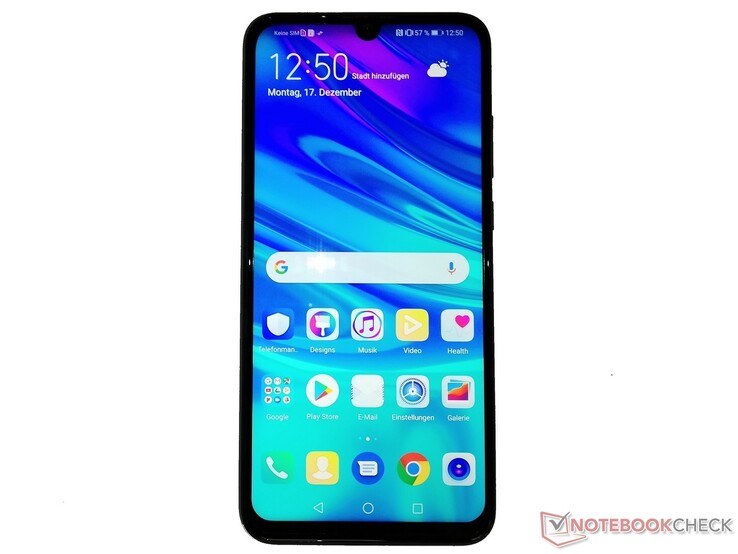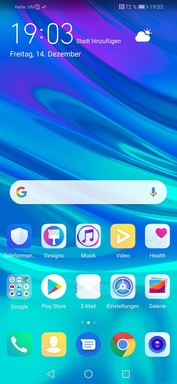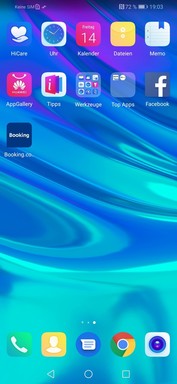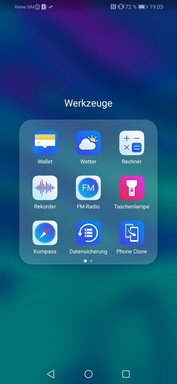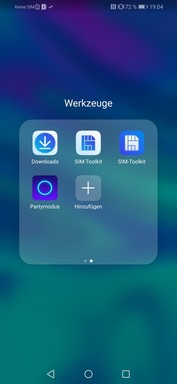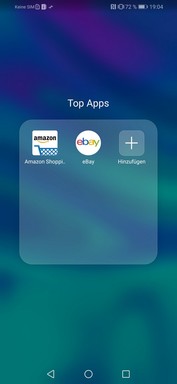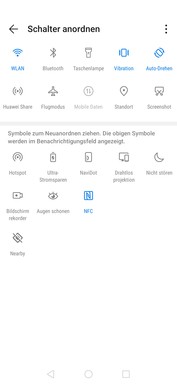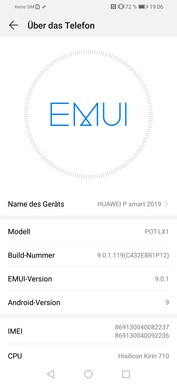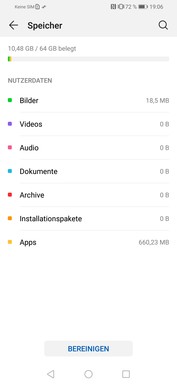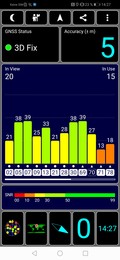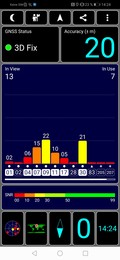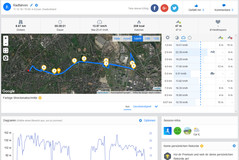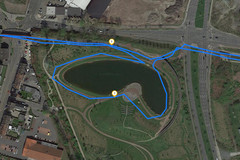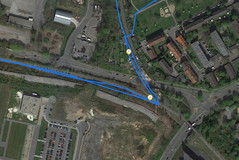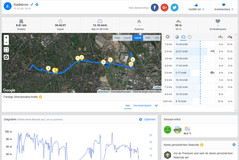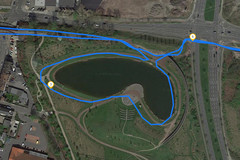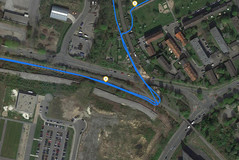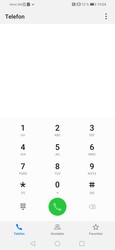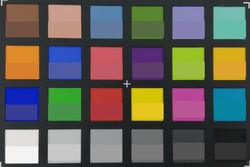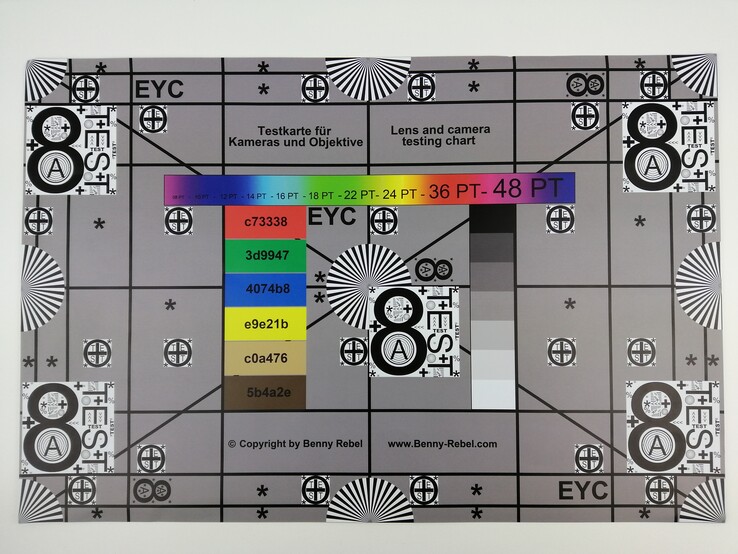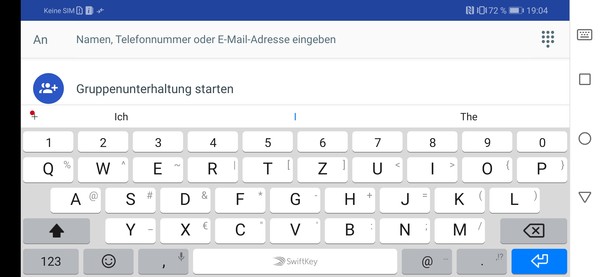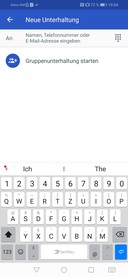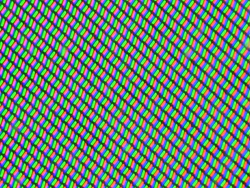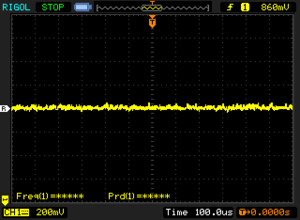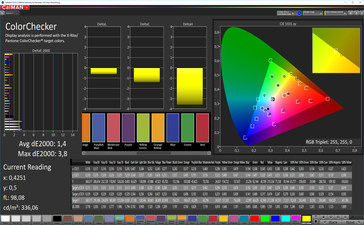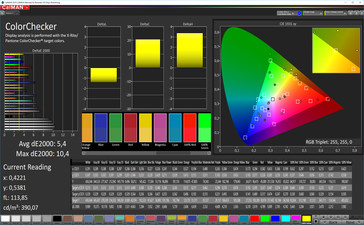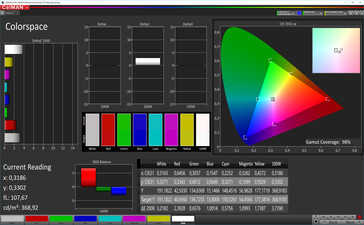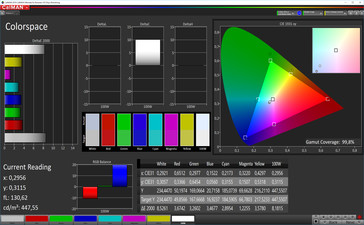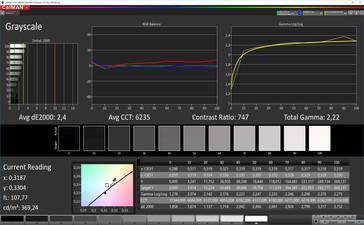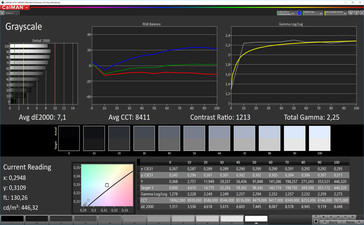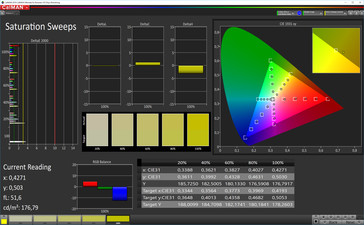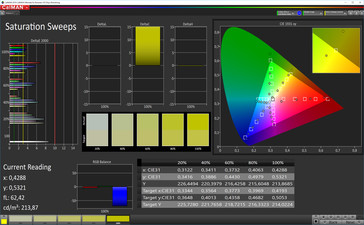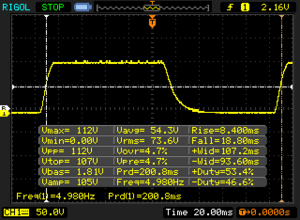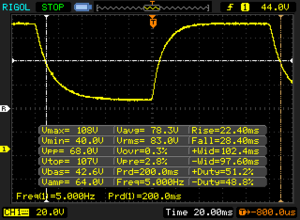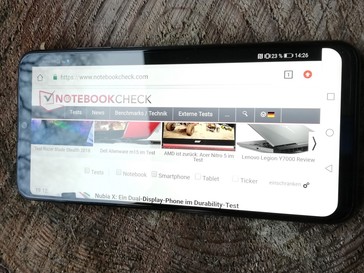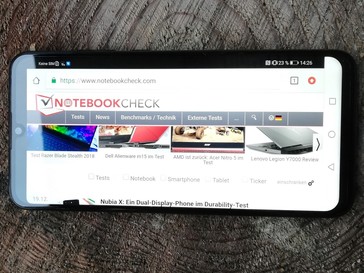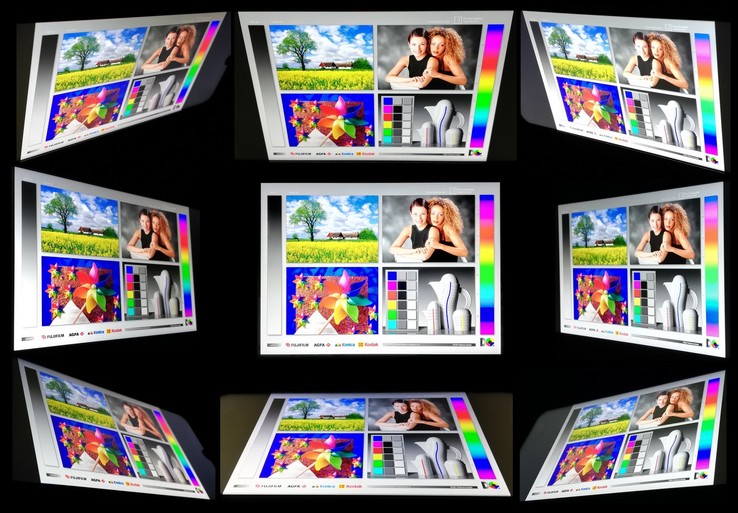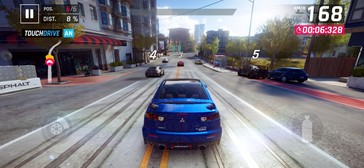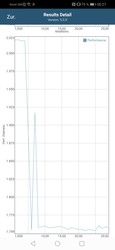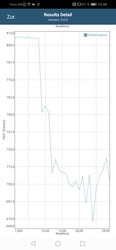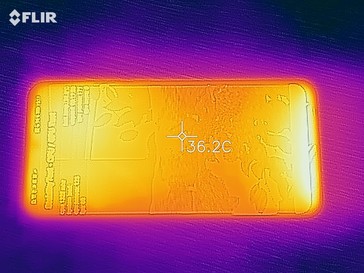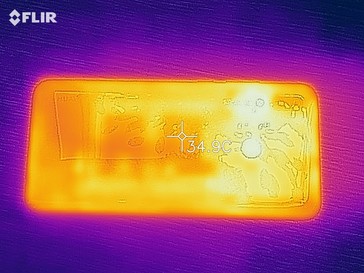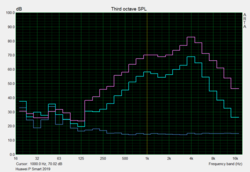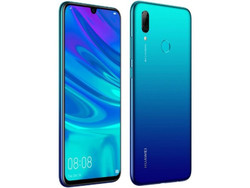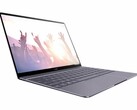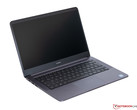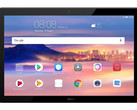Huawei P Smart (2019) Smartphone Review
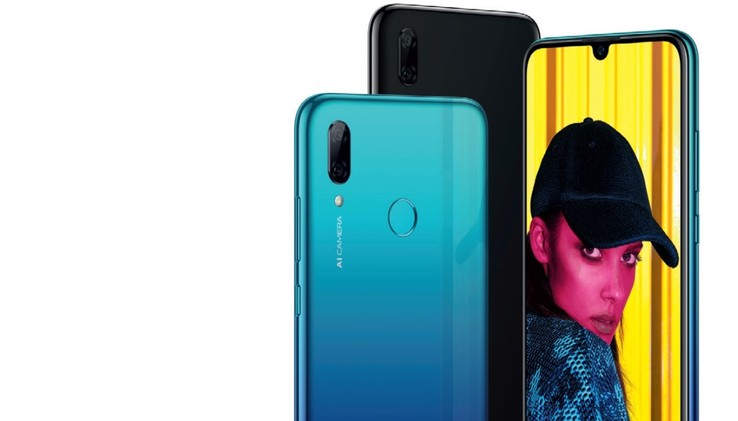
With the P Smart 2019, Huawei attempts to strike the best balance between price and performance once again. There are two versions of the P Smart 2019: dual-SIM/single-SIM. The smartphone also comes in two different color schemes and has a very reasonable price tag of 250 Euros (~$285).
The P Smart 2019 is powered by the HiSilicon Kirin 710 SoC, which features ARM’s Mali G51 MP4 graphics unit. Our review device has 3 GB of RAM and 64 GB of internal eMMC memory. The P Smart 2019 has basically the same hardware as the Honor 10 Lite, except that the latter comes with 4 GB of RAM.
Besides the predecessor model Huawei P Smart, we also include other competing devices with a similar price tag and performance in this review for comparison purposes. The competing devices include: the Samsung Galaxy A7 (2018), the Motorola One, the Honor 8X and the Nokia 5.1 Plus.
Case - The Huawei smartphone is made of plastic
The case of the Huawei P Smart 2019 is made of Plexiglas, which comes in two main color schemes: Midnight Black and Aurora Blue. The edges of the glass are rounded so that the glass on the back melds seamlessly with the glass on the front. It is quite well-done actually. All in all, the P Smart 2019 has great build quality and feels good in the hand.
Despite its smooth surfaces, the Huawei smartphone does not easily slide off the table and is very unlikely to slip out of your hand. However, during our review, we discovered that the glass surfaces scratch very easily and that the P Smart 2019 is a veritable fingerprint magnet. The screen protector is also placed in such a way that when swiping up and down the screen with the thumb, it often goes past the edges of the screen protector. This is noticeable every time and the transition between the screen protector and the unprotected glass feels very jarring.
The physical buttons are located on the right side of the Huawei smartphone. They wobble slightly but still sit quite firmly in their cutouts. The nanoSIM/microSD card tray is located at the top of the smartphone. It sits very tightly in its slot as well.
Connectivity - Modern SoC in the Huawei P Smart 2019
The P Smart 2019 comes with the Kirin 710, which is a mid-range SoC that was released at the beginning of 2018. Thanks to this SoC, the smartphone feels very responsive. The ARM Mali-G51 MP4 is responsible for image rendering. 3 GB of RAM and 64 GB of internal storage round off the package. According to the manufacturer, the storage space can be expanded by up to 512 GB with the help of a microSD card. However, if you choose to use an SD card, then you will not be able to insert a second nanoSIM card. Those who decide to go with two SIM cards will be able to sign into LTE networks on both SIM cards. The smartphone also supports VoLTE and Wi-Fi calling.
Data can be transferred through a wired connection with the help of the microUSB port. The USB port operates at USB 2.0 speeds and features OTG functionality. The included headset or external speakers can be connected to the device via the 3.5-mm audio jack.
Software - Cheap smartphone with Android Pie
The Huawei P Smart 2019 runs Android 9 Pie. The security patches were last updated on November 1, 2018. The smartphone comes with a proprietary launcher (EMUI 9.0.1). The launcher offers a few proprietary apps for calling and messaging as well as a custom settings menu. Even new-comers should not have any difficulty navigating the system, because it is very intuitive and runs quite well. In the Huawei App Gallery, applications that can improve the user experience get recommended regularly.
A few third-party apps such as Facebook, eBay and Amazon Shopping come preinstalled with the P Smart 2019. That being said, these apps can be completely removed. You can set the microSD card as default storage in the settings menu. However, only user data can be stored on the SD card, not apps themselves. Moreover, SD cards cannot be formatted as internal storage.
In the settings menu, you can set up multiple accounts for various services. Nevertheless, you cannot create more than one user account for the Huawei P Smart 2019 itself.
Communication and GPS - The P Smart 2019 supports NFC and LTE
The P Smart 2019 supports the following mobile communication standards: GSM, UMTS and LTE. Our current review device can use the same number of LTE bands as its predecessor. The P Smart 2019 still operates at LTE Category 6 speeds. This means that it can achieve download speeds of up to 300 Mb/s and upload speeds of up to 50 Mb/s. We did not observe any connectivity issues with the P Smart 2019, which means that the smartphone can be reliably used at any time.
For short-distance communication, the Huawei smartphone relies on NFC, Bluetooth 4.2 and Wi-Fi. The Wi-Fi module supports the following wireless standards: a, b, g, n and ac. In our Wi-Fi test, the Huawei P Smart 2019 does much better than its predecessor. It achieves a data reception speed of 164 Mb/s and a data transmission speed of 226 Mb/s. However, with these results, it only manages to land a spot in the middle of our comparison chart.
| Networking | |
| iperf3 transmit AX12 | |
| Samsung Galaxy A7 2018 | |
| Nokia 5.1 Plus | |
| Huawei P Smart 2019 | |
| Honor 8X | |
| Motorola One | |
| Huawei P smart | |
| iperf3 receive AX12 | |
| Nokia 5.1 Plus | |
| Samsung Galaxy A7 2018 | |
| Honor 8X | |
| Huawei P Smart 2019 | |
| Motorola One | |
| Huawei P smart | |
We use the GSP Test app to examine how well the P Smart 2019 does when it comes to geolocation. The Huawei smartphone supports GPS, GLONASS and Beidou. Outdoors, the P Smart 2019 has a margin of error of roughly five meters. Your location can be acquired indoors as well as, but with a margin of error of about 20 meters.
On our obligatory bike ride, the P Smart 2019 proves to be quite accurate when compared to our reference-grade navigator Garmin Edge 520. However, the route that we took was not mapped perfectly on the Android smartphone. Some corners were cut and a few curves were flattened. Nevertheless, the P Smart 2019 is good enough for daily navigation.
Telephony and Call Quality - The Huawei P Smart comes with a headset
The smartphone comes with Huawei’s proprietary phone app. It offers direct access to the dial screen. There are also two other tabs: one for contacts, the other for favorites. The Huawei P Smart 2019 provides a very good call quality. The voices on either end of the call sound clear and intelligible. The background noise is filtered out successfully and the P Smart 2019 is loud enough for you to be able to use it in somewhat loud environments.
The box of the Huawei smartphone contains a headset, which does a good job when it is used for calls. It gets somewhat louder, which is why it can be easily used instead of the ear-speaker.
Cameras - P Smart 2019 has two cameras
The Huawei P Smart 2019 comes with a powerful 13+2 MP dual-camera system on the back and an 8 MP camera on the front. The front-facing camera takes usable images in daylight, which appear a little blurry. It does not reproduce fine structures very well. However, the colors look good and image elements with high contrast are easy to tell apart. In the settings menu, users can enable the beauty mode for taking selfies. You can also turn the Bokeh effect off and on.
The main camera of the P Smart 2019 takes usable panoramic shots, which become somewhat grainy at high zoom levels. Moreover, the camera cannot handle images with a lot of dynamic range. There is some black crash in photos with a wide dynamic range. Detail is lost in the darker areas of the image. There is also very little detail in shots taken in shady environments. The objects are very hard to tell apart. In close-up shots, there is a lot more detail and the darker areas are much better reproduced. Fine details and structures are also very well-rendered. The rear camera of the P Smart 2019 shows its better side in dim environments. The colors appear somewhat washed-out, but the level of detail is quite good and the image is well-lit even at the edges.
Huawei’s camera app comes with a whole set of AI features, which can improve image quality or add various lighting effects or even create images with small movements in them. The feature called "HiVision" offers users an opportunity to look up objects in focus on major shopping websites. In Pro mode, you can customize image quality even further. Here you can change the following settings: exposure, ISO value, shutter speed, white balance and focus.
Videos shot with the P Smart 2019 look just as good as the photos. Here the strength of the camera is seen in low-light conditions. Besides beauty effects, the camera app does not offer any other features.
We use the X-Rite ColorChecker Passport tool to assess the color accuracy of the Huawei P Smart 2019’s camera. Most of the colors appear overbrightened. However, some colors such as dark gray and black tones are too dim.
We examine the color reproduction of the Huawei smartphone under controlled lighting conditions. Fine lines, colors and details are all well-reproduced. However, the image appears a little washed-out at the lower edges.
Accessories and Warranty - Huawei smartphone with a 24-month warranty
The box contains a USB charger, microUSB cable, SIM-card ejection tool and a stereo headset. There are no other accessories that were specifically designed for the P Smart 2019. However, Huawei offers a number of Bluetooth headsets, car chargers and power banks that are compatible with our review device.
The smartphone has a 24-month warranty. Please see our Guarantees, Return policies and Warranties article for country-specific information.
Input Devices and Handling - Huawei smartphone with SwiftKey
The Huawei P Smart 2019 comes with the SwiftKey keyboard, which is why typing on the smartphone is easy and intuitive. The appearance of the keyboard can be customized. You can change the number of key rows, the size of the keys, the color of the keys and the keyboard layout. The display responds to inputs without any delays. The smooth surface of the touchscreen makes drag-and-drop motions easy, especially when you need to do a lot of them. This does not tire your fingers.
There is a fingerprint sensor on the back of the P Smart 2019. It unlocks the smartphone quickly and reliably. During our review, it failed to recognize our fingerprint only once.
Display - 6-inch smartphone with a good screen
The screen of the Huawei P Smart 2019 measures 6.2 inches diagonally and has a native resolution of 2340x1080. The average brightness of 440 cd/m² is the lowest result in our comparison chart and the brightness distribution of 85% is also the worst value among the competing devices. During our measurements, we determined that the smartphone does not use pulse width modulation for brightness control.
| |||||||||||||||||||||||||
Brightness Distribution: 85 %
Center on Battery: 458 cd/m²
Contrast: 1309:1 (Black: 0.35 cd/m²)
ΔE ColorChecker Calman: 1.4 | ∀{0.5-29.43 Ø4.78}
ΔE Greyscale Calman: 2.4 | ∀{0.09-98 Ø5}
98% sRGB (Calman 2D)
Gamma: 2.22
CCT: 6235 K
| Huawei P Smart 2019 IPS, 2340x1080, 6.2" | Huawei P smart IPS, 2160x1080, 5.7" | Nokia 5.1 Plus IPS, 1520x720, 5.8" | Honor 8X LCD IPS, 2340x1080, 6.5" | Motorola One IPS, 1520x720, 5.9" | Samsung Galaxy A7 2018 Super AMOLED, 2220x1080, 6" | |
|---|---|---|---|---|---|---|
| Screen | -51% | -58% | -111% | -62% | 18% | |
| Brightness middle (cd/m²) | 458 | 573 25% | 513 12% | 484 6% | 467 2% | 570 24% |
| Brightness (cd/m²) | 440 | 568 29% | 502 14% | 469 7% | 452 3% | 565 28% |
| Brightness Distribution (%) | 85 | 89 5% | 89 5% | 93 9% | 87 2% | 93 9% |
| Black Level * (cd/m²) | 0.35 | 0.63 -80% | 0.36 -3% | 0.55 -57% | 0.38 -9% | |
| Contrast (:1) | 1309 | 910 -30% | 1425 9% | 880 -33% | 1229 -6% | |
| Colorchecker dE 2000 * | 1.4 | 4.2 -200% | 5.2 -271% | 7.3 -421% | 5.29 -278% | 1.5 -7% |
| Colorchecker dE 2000 max. * | 3.8 | 6.4 -68% | 9.8 -158% | 11.1 -192% | 7.71 -103% | 3.6 5% |
| Greyscale dE 2000 * | 2.4 | 4.6 -92% | 4.1 -71% | 7.4 -208% | 5 -108% | 1.2 50% |
| Gamma | 2.22 99% | 2.24 98% | 2.33 94% | 2.16 102% | 2.376 93% | 2.07 106% |
| CCT | 6235 104% | 7157 91% | 7423 88% | 8534 76% | 7583 86% | 6504 100% |
* ... smaller is better
Screen Flickering / PWM (Pulse-Width Modulation)
| Screen flickering / PWM not detected | |||
In comparison: 53 % of all tested devices do not use PWM to dim the display. If PWM was detected, an average of 8108 (minimum: 5 - maximum: 343500) Hz was measured. | |||
Our measurements show that the Huawei P Smart 2019 has a black value of 0.35 cd/m² and a contrast ratio of 1309:1. This is why the colors are easy to tell apart and the dark tones look rather grayish.
The CalMAN analysis reveals that the colors appear very balanced, straight out of the box. In the settings menu, you can change the color temperature and switch between two predetermined profiles "Standard" and “Vivid”. The “Vivid” profile raises the color temperature significantly, which is why the image appears clearer but colder.
Display Response Times
| ↔ Response Time Black to White | ||
|---|---|---|
| 27.2 ms ... rise ↗ and fall ↘ combined | ↗ 8.4 ms rise | |
| ↘ 18.8 ms fall | ||
| The screen shows relatively slow response rates in our tests and may be too slow for gamers. In comparison, all tested devices range from 0.1 (minimum) to 240 (maximum) ms. » 68 % of all devices are better. This means that the measured response time is worse than the average of all tested devices (20.2 ms). | ||
| ↔ Response Time 50% Grey to 80% Grey | ||
| 50.8 ms ... rise ↗ and fall ↘ combined | ↗ 22.4 ms rise | |
| ↘ 28.4 ms fall | ||
| The screen shows slow response rates in our tests and will be unsatisfactory for gamers. In comparison, all tested devices range from 0.165 (minimum) to 636 (maximum) ms. » 87 % of all devices are better. This means that the measured response time is worse than the average of all tested devices (31.6 ms). | ||
The display brightness of the Huawei P Smart 2019 is high enough for it to be usable outdoors. The screen content can even be read on sunny days. However, the screen becomes difficult to read in direct sunlight and the reflections of the objects in the environment make reading screen content even harder.
Performance - The Huawei P Smart 2019 is quite capable
The Huawei P Smart 2019 comes with the HiSilicon Kirin 710 SoC and the ARM Mali-G51 MP4 graphics unit. Moreover, the Huawei smartphone is equipped with 3 GB of RAM and 64 GB of eMMC storage. This is why it is powerful enough for the smooth operation of Android and can run all simple apps and even very-demanding applications.
Our benchmark results show that the Huawei P Smart 2019 offers very good system performance. The Huawei smartphone is beaten by the Honor 8X, which comes with the same SoC, but it has more RAM.
| PCMark for Android | |
| Work performance score (sort by value) | |
| Huawei P Smart 2019 | |
| Huawei P smart | |
| Nokia 5.1 Plus | |
| Honor 8X | |
| Motorola One | |
| Samsung Galaxy A7 2018 | |
| Average HiSilicon Kirin 710 (7004 - 9854, n=13) | |
| Work 2.0 performance score (sort by value) | |
| Huawei P Smart 2019 | |
| Huawei P smart | |
| Nokia 5.1 Plus | |
| Honor 8X | |
| Motorola One | |
| Samsung Galaxy A7 2018 | |
| Average HiSilicon Kirin 710 (5803 - 7141, n=12) | |
| GFXBench 3.0 | |
| on screen Manhattan Onscreen OGL (sort by value) | |
| Huawei P Smart 2019 | |
| Huawei P smart | |
| Nokia 5.1 Plus | |
| Honor 8X | |
| Motorola One | |
| Average HiSilicon Kirin 710 (14 - 19, n=12) | |
| Average of class Smartphone (18 - 166, n=157, last 2 years) | |
| 1920x1080 1080p Manhattan Offscreen (sort by value) | |
| Huawei P Smart 2019 | |
| Huawei P smart | |
| Nokia 5.1 Plus | |
| Honor 8X | |
| Motorola One | |
| Average HiSilicon Kirin 710 (17 - 21, n=12) | |
| Average of class Smartphone (12 - 606, n=156, last 2 years) | |
| GFXBench 3.1 | |
| on screen Manhattan ES 3.1 Onscreen (sort by value) | |
| Huawei P Smart 2019 | |
| Huawei P smart | |
| Nokia 5.1 Plus | |
| Honor 8X | |
| Motorola One | |
| Average HiSilicon Kirin 710 (11 - 13, n=12) | |
| Average of class Smartphone (11 - 166, n=157, last 2 years) | |
| 1920x1080 Manhattan ES 3.1 Offscreen (sort by value) | |
| Huawei P Smart 2019 | |
| Huawei P smart | |
| Nokia 5.1 Plus | |
| Honor 8X | |
| Motorola One | |
| Average HiSilicon Kirin 710 (12 - 14, n=12) | |
| Average of class Smartphone (8.4 - 413, n=156, last 2 years) | |
| AnTuTu v7 - Total Score (sort by value) | |
| Huawei P Smart 2019 | |
| Huawei P smart | |
| Nokia 5.1 Plus | |
| Honor 8X | |
| Motorola One | |
| Samsung Galaxy A7 2018 | |
| Average HiSilicon Kirin 710 (124870 - 183420, n=10) | |
| AnTuTu v6 - Total Score (sort by value) | |
| Huawei P Smart 2019 | |
| Huawei P smart | |
| Nokia 5.1 Plus | |
| Honor 8X | |
| Motorola One | |
| Samsung Galaxy A7 2018 | |
| Average HiSilicon Kirin 710 (104012 - 112870, n=8) | |
In the browser benchmarks, the Huawei P Smart 2019 beats all other competing devices. All in all, the Huawei smartphone offers a smooth browsing experience: Websites and media content load relatively quickly.
| JetStream 1.1 - Total Score | |
| Average HiSilicon Kirin 710 (47 - 55.1, n=10) | |
| Huawei P Smart 2019 (Chrome 70) | |
| Samsung Galaxy A7 2018 (Chrome 70) | |
| Honor 8X (Chrome 70) | |
| Nokia 5.1 Plus (Chrome 71) | |
| Huawei P smart (Chrome 64) | |
| Motorola One (Chrome 69) | |
| Octane V2 - Total Score | |
| Average of class Smartphone (2228 - 121337, n=197, last 2 years) | |
| Huawei P Smart 2019 (Chrome 70) | |
| Average HiSilicon Kirin 710 (9041 - 10544, n=13) | |
| Samsung Galaxy A7 2018 (Chrome 70) | |
| Honor 8X (Chrome 70) | |
| Nokia 5.1 Plus (Chrome 71) | |
| Huawei P smart (Chrome 64) | |
| Motorola One (Chrome 69) | |
| Mozilla Kraken 1.1 - Total | |
| Motorola One (Chrome 69) | |
| Huawei P smart (Chrome 64) | |
| Nokia 5.1 Plus (Chrome 71) | |
| Honor 8X | |
| Average HiSilicon Kirin 710 (3999 - 4853, n=13) | |
| Samsung Galaxy A7 2018 (Chrome 70) | |
| Huawei P Smart 2019 (Chrome 70) | |
| Average of class Smartphone (257 - 28190, n=154, last 2 years) | |
| WebXPRT 3 - Overall | |
| Average of class Smartphone (38 - 380, n=31, last 2 years) | |
| Huawei P Smart 2019 (Chrome 70) | |
| Average HiSilicon Kirin 710 (52 - 69, n=11) | |
| Honor 8X (Chrome 70) | |
| Samsung Galaxy A7 2018 (Chrome 70) | |
| Nokia 5.1 Plus | |
| WebXPRT 2015 - Overall | |
| Huawei P Smart 2019 (Chrome 70) | |
| Samsung Galaxy A7 2018 (Chrome 70) | |
| Average HiSilicon Kirin 710 (147 - 178, n=5) | |
| Honor 8X (Chrome 70) | |
| Nokia 5.1 Plus (Chrme 71) | |
| Motorola One (Chrome 69) | |
| Huawei P smart (Chrome 64) | |
* ... smaller is better
The smartphone offers 64 GB of internal eMMC flash storage. However, only 55 GB of storage space is available straight out of the box. In the storage benchmarks, the P Smart 2019 performs slightly better than most other competing devices.
According to the manufacturer, the storage capacity of the P Smart 2019 can be expanded by up to 512 GB with the help of a microSD card. Nevertheless, only user data can be stored on the SD card. You cannot use it to store apps or format it as internal storage. With our reference-grade SD card Toshiba Exceria Pro M501, the Huawei smartphone achieves read and write speeds comparable to other competing devices.
| Huawei P Smart 2019 | Huawei P smart | Nokia 5.1 Plus | Honor 8X | Motorola One | Samsung Galaxy A7 2018 | Average 64 GB eMMC Flash | Average of class Smartphone | |
|---|---|---|---|---|---|---|---|---|
| AndroBench 3-5 | -9% | -9% | -3% | 7% | -6% | -7% | 617% | |
| Sequential Read 256KB (MB/s) | 288.3 | 269.4 -7% | 301.6 5% | 283.9 -2% | 280.2 -3% | 295.8 3% | 277 ? -4% | 2228 ? 673% |
| Sequential Write 256KB (MB/s) | 191.4 | 121.1 -37% | 88.9 -54% | 170 -11% | 214.9 12% | 104.9 -45% | 178.4 ? -7% | 1852 ? 868% |
| Random Read 4KB (MB/s) | 45.66 | 66.1 45% | 77.7 70% | 49.54 8% | 61.9 36% | 84 84% | 60.7 ? 33% | 296 ? 548% |
| Random Write 4KB (MB/s) | 70.7 | 21.3 -70% | 25.65 -64% | 59.9 -15% | 69.1 -2% | 15.45 -78% | 33.8 ? -52% | 339 ? 379% |
| Sequential Read 256KB SDCard (MB/s) | 76.2 ? | 82.3 ? 8% | 76.6 ? 1% | 75.2 ? -1% | 80.8 ? 6% | 78.2 ? 3% | 77.4 ? 2% | |
| Sequential Write 256KB SDCard (MB/s) | 66.9 ? | 72.4 ? 8% | 59.6 ? -11% | 68.1 ? 2% | 60.9 ? -9% | 64.4 ? -4% | 58.3 ? -13% |
Games - Gaming-capable Android smartphone
The Huawei P Smart 2019 comes with ARM’s Mali-G51 MP4 graphics unit. This GPU can run graphically demanding applications without being brought down to its knees. In our gaming benchmarks, the smartphone was able to run demanding titles on high settings over an extended period of time. We use Gamebench to record FPS in the games that we benchmark.
The touchscreen responds promptly to inputs while gaming. Longer drag-and-drop and swiping motions are very easy to accomplish, thanks to the smooth glass surface. The motion sensor reacts promptly to the movements of the smartphone and has no trouble maintaining the correct screen orientation.
Arena of Valor
Asphalt 9: Legends
Emissions - Less performance in the stress test
Temperature
In day-to-day use, the surface temperatures of the Huawei P Smart 2019 reach up to 33 °C (91.4 °F) when idle and a maximum of 36 °C (96.8 °F) under load. This is why the smartphone can be comfortably held in the hand over an extended period of time.
Our GFXBench benchmarks show that the smartphone throttles down under continuous load. In the OpenGL ES 2.0 benchmark, the performance drops by about 15% and in the Manhattan 3.1 benchmark the performance falls by roughly 13%. We did not notice any limitations in everyday use. However, if you are going to use demanding applications, then you will notice a drop in performance.
(+) The maximum temperature on the upper side is 35.5 °C / 96 F, compared to the average of 35.2 °C / 95 F, ranging from 21.9 to 247 °C for the class Smartphone.
(+) The bottom heats up to a maximum of 36 °C / 97 F, compared to the average of 34 °C / 93 F
(+) In idle usage, the average temperature for the upper side is 28.9 °C / 84 F, compared to the device average of 32.9 °C / 91 F.
Speakers
The speaker of the P Smart 2019 sounds comparatively loud and rather high-pitched. This is why media content does not sound very balanced. However, voices do sound very clear. With the P Smart 2019, we recommend using external speakers or headphones, which can be connected via the included 3.5-mm audio jack. We did not observe any issues with the headphone jack.
The smartphone comes with a headset. It is good enough for making phone calls and consuming media content.
Huawei P Smart 2019 audio analysis
(+) | speakers can play relatively loud (87 dB)
Bass 100 - 315 Hz
(-) | nearly no bass - on average 26.9% lower than median
(±) | linearity of bass is average (10.2% delta to prev. frequency)
Mids 400 - 2000 Hz
(±) | higher mids - on average 5.3% higher than median
(+) | mids are linear (6.3% delta to prev. frequency)
Highs 2 - 16 kHz
(±) | higher highs - on average 10% higher than median
(±) | linearity of highs is average (10.1% delta to prev. frequency)
Overall 100 - 16.000 Hz
(±) | linearity of overall sound is average (26.9% difference to median)
Compared to same class
» 69% of all tested devices in this class were better, 5% similar, 26% worse
» The best had a delta of 11%, average was 35%, worst was 134%
Compared to all devices tested
» 82% of all tested devices were better, 4% similar, 14% worse
» The best had a delta of 4%, average was 24%, worst was 134%
Samsung Galaxy A7 2018 audio analysis
(+) | speakers can play relatively loud (85.5 dB)
Bass 100 - 315 Hz
(-) | nearly no bass - on average 27.5% lower than median
(±) | linearity of bass is average (10.4% delta to prev. frequency)
Mids 400 - 2000 Hz
(+) | balanced mids - only 3.6% away from median
(+) | mids are linear (4.8% delta to prev. frequency)
Highs 2 - 16 kHz
(±) | higher highs - on average 8.2% higher than median
(+) | highs are linear (3.3% delta to prev. frequency)
Overall 100 - 16.000 Hz
(±) | linearity of overall sound is average (22.3% difference to median)
Compared to same class
» 46% of all tested devices in this class were better, 7% similar, 47% worse
» The best had a delta of 11%, average was 35%, worst was 134%
Compared to all devices tested
» 64% of all tested devices were better, 6% similar, 30% worse
» The best had a delta of 4%, average was 24%, worst was 134%
Battery Life - Shorter battery runtimes despite a bigger battery
Energy Consumption
The P Smart 2019 draws at least 0.84 watts when idle and a maximum of 7.86 watts under load, which is why it takes a spot in the middle of our comparison chart. All in all, the P Smart 2019 draws as much power as other devices with the HiSilicon Kirin 710.
The included 10-watt charger is powerful enough to charge the Huawei P Smart 2019 under any circumstances.
| Off / Standby | |
| Idle | |
| Load |
|
Key:
min: | |
| Huawei P Smart 2019 3400 mAh | Huawei P smart 3000 mAh | Nokia 5.1 Plus 3060 mAh | Honor 8X 3750 mAh | Motorola One 3000 mAh | Samsung Galaxy A7 2018 3300 mAh | Average HiSilicon Kirin 710 | Average of class Smartphone | |
|---|---|---|---|---|---|---|---|---|
| Power Consumption | 15% | 27% | 0% | 15% | 13% | -10% | -10% | |
| Idle Minimum * (Watt) | 0.84 | 0.62 26% | 0.56 33% | 0.92 -10% | 1 -19% | 0.71 15% | 1.058 ? -26% | 0.842 ? -0% |
| Idle Average * (Watt) | 2.21 | 1.76 20% | 1.72 22% | 2.3 -4% | 1.6 28% | 1.36 38% | 2.2 ? -0% | 1.439 ? 35% |
| Idle Maximum * (Watt) | 2.23 | 1.87 16% | 1.76 21% | 2.32 -4% | 2 10% | 1.47 34% | 2.57 ? -15% | 1.624 ? 27% |
| Load Average * (Watt) | 4.2 | 4.47 -6% | 3.11 26% | 4.37 -4% | 3.3 21% | 5.13 -22% | 4.61 ? -10% | 7.03 ? -67% |
| Load Maximum * (Watt) | 7.86 | 6.39 19% | 5.2 34% | 6.13 22% | 5.1 35% | 7.89 -0% | 7.6 ? 3% | 11.3 ? -44% |
* ... smaller is better
Battery Life
In our practically oriented Wi-Fi test, the Huawei P Smart 2019 lasts for about eight hours. The battery runtimes of the 3400-mAh battery are well below average and are beaten by about an hour by the predecessor model.
The battery takes one-and-a-half hours to fully charge with the included fast charger.
| Huawei P Smart 2019 3400 mAh | Huawei P smart 3000 mAh | Honor 8X 3750 mAh | Motorola One 3000 mAh | Samsung Galaxy A7 2018 3300 mAh | |
|---|---|---|---|---|---|
| Battery runtime | 0% | 69% | 36% | 30% | |
| Reader / Idle (h) | 21.6 | 16.4 -24% | 27.5 27% | 24.5 13% | |
| H.264 (h) | 7.7 | 10.3 34% | 12.8 66% | 13.9 81% | |
| WiFi v1.3 (h) | 8.4 | 9.4 12% | 14.2 69% | 12.3 46% | 10.1 20% |
| Load (h) | 4.3 | 3.4 -21% | 4.5 5% | 4.6 7% |
Pros
Cons
Verdict - Cheap Huawei smartphone with a lot of power
At first glance, the Huawei P Smart 2019 appears to be better than its predecessor in every way. It is bigger, offers more storage space and it has a powerful SoC. Moreover, it looks modern and has smaller bezels around the screen.
For a very low price, buyers of the Huawei P Smart 2019 get a powerful smartphone that should have no trouble meeting the needs of most people.
Buyers cannot really go wrong with this 250-Euro (~$285) smartphone, but they should still be aware of its weaknesses. The battery life is one hour shorter than the predecessor, despite the P Smart 2019 having a larger battery. The camera offers a mediocre image quality, but it should be good enough for most photos. Everyday apps and games run without any problems. However, the smartphone starts to throttle in very-demanding applications.
Huawei P Smart 2019
- 12/27/2018 v6 (old)
Mike Wobker




